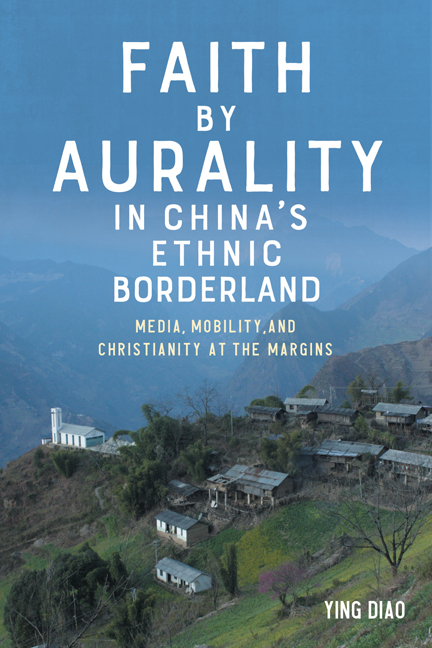Book contents
- Frontmatter
- Dedication
- Contents
- Acknowledgments
- Notes on Romanization and Terminology
- Introduction
- 1 Becoming the Faithful: Cleanliness and Conversion
- 2 Hearing the Return of Faith: Radio and Listening Audience
- 3 Producing Gospel Songs: Studio and Media Practitioners
- 4 Faces and Places: Sounds That Recognize
- 5 Traces of Faith: Sound Artifacts and Infrastructures
- 6 Performing Recorded Songs: Religiosity by Body
- 7 Hidden Faith: Sanitizing the Voice
- Conclusion: Faith on the New Frontier
- Appendix 1 Glossary of Old Lisu
- Appendix 2 Glossary of Chinese Characters
- References
- Index
4 - Faces and Places: Sounds That Recognize
Published online by Cambridge University Press: 15 May 2024
- Frontmatter
- Dedication
- Contents
- Acknowledgments
- Notes on Romanization and Terminology
- Introduction
- 1 Becoming the Faithful: Cleanliness and Conversion
- 2 Hearing the Return of Faith: Radio and Listening Audience
- 3 Producing Gospel Songs: Studio and Media Practitioners
- 4 Faces and Places: Sounds That Recognize
- 5 Traces of Faith: Sound Artifacts and Infrastructures
- 6 Performing Recorded Songs: Religiosity by Body
- 7 Hidden Faith: Sanitizing the Voice
- Conclusion: Faith on the New Frontier
- Appendix 1 Glossary of Old Lisu
- Appendix 2 Glossary of Chinese Characters
- References
- Index
Summary
When you hear it [the Burmese Lisu song], you just know that it is written/sung by the Burmese [Lisu]. They play the guitar better and have a pleasant voice.
—Agreed unanimously by the Lisu hanleixsu in Nujiang
This is the general reflection of the listening experience that average Lisu informants shared with me during my fieldwork in Nujiang between 2012 and 2014. It later became the main reason why I chose to focus on the aural dimension of religiosities in my effort to understand a distinctively Lisu Christian striving hinging on historical processes, transnational connections, and local specificities. It seemed that for members of the Lisu Gospel community Nujiang, it was not merely the language and content but also the acoustic characteristics that helped make sense of their hearing experience of nonlocal music.
The restoration of the policy of religious freedom in the 1980s has facilitated a gradual resurgence of religious activities in Nujiang after more than two decades of interruption. Between the 1980s and the 2000s, the Nujiang Lisu were able to resume a variety of ways to practice faith and to interact with their fellow church members who had left China during different periods. A small number of aspiring young people were sent to pursue theological studies in the Lisu Bible training centers close to the border. For the majority of the community members, one principal way in which they could make real and imagined transnational connec-tions was through sound from outside China; to put it more precisely, they did this through the recontextualization of gospel music, which was imported into local worship services and everyday life, and by composing songs in a style influenced by the imported repertoire. The aural experience based on a shared hearing of mediated sounds thus played an important part in creating emotional and imaginary bonds with nonvisible churches outside China, leaving a resounding sonic imprint that the locals could identify as a source of ethnoreligious belonging.
This chapter attempts to understand how the pervasive sound of Burmese Lisu music has become essential in the local religious experience. More specifically, it analyzes how those nonlocal sounds are received by members of the Lisu Gospel community Nujiang and how perceived differences in instrumental sounds and singing voices affect their evaluation of nonvisible people and places.
- Type
- Chapter
- Information
- Faith by Aurality in China's Ethnic BorderlandMedia, Mobility, and Christianity at the Margins, pp. 90 - 114Publisher: Boydell & BrewerPrint publication year: 2023

